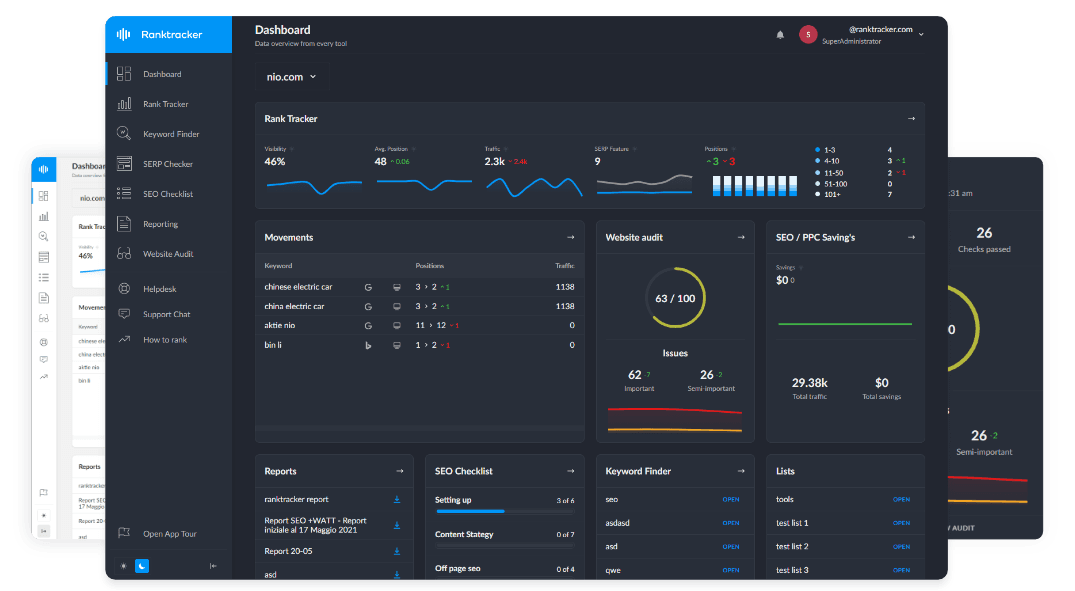Intro
Link building remains a core part of SEO in 2025—but the tactics that worked five years ago could now lead to penalties, wasted spend, or stagnant rankings. As Google sharpens its spam detection and prioritizes topical authority, it’s more important than ever to focus on sustainable, ethical, and high-impact link building strategies.
Here’s a breakdown of what’s working in 2025—and what should be left behind.
What Still Works in 2025
1. Contextual, Editorial Links
Links placed naturally within relevant content on real websites remain the gold standard.
-
In-content placements within articles
-
High topical relevance
-
Dofollow, indexed, and traffic-backed pages
-
Anchor text variation and natural language use
Agencies like Ranktracker specialize in this kind of link—placed manually on live, niche-relevant websites with transparent reporting and strong metrics.
2. Digital PR and Thought Leadership
Earning backlinks through press coverage, interviews, or expert quotes drives both SEO and brand visibility.
-
HARO (Help a Reporter Out) responses
-
Original research or data-driven studies
-
Press releases to relevant industry sites
This approach builds credibility and tends to attract high-authority links naturally.
3. Guest Posts on Niche Sites
Still effective when done properly—especially if:
-
The guest site is in your vertical
-
The content is genuinely valuable
-
You maintain anchor and link diversity
It’s critical to avoid guest post farms or irrelevant blogs. Quality matters more than volume.
4. Link Insertions (Niche Edits)
When added to aged, indexed content, link insertions still carry value—especially for mid-funnel and educational pages.
-
Only works if the existing article is ranking or has traffic
-
Avoid sites that sell hundreds of link edits on every page
-
Ensure the context fits naturally
5. Internal Linking Strategy
Often overlooked, but linking between your own pages boosts crawlability and authority distribution—especially when combined with fresh backlinks.
-
Use tools like Ranktracker’s Site Audit to find internal linking gaps
-
Prioritize orphaned pages or new content
What No Longer Works (or Carries Risk)
1. PBNs (Private Blog Networks)
Easily identified by Google in 2025—even “clean” ones.
-
Little to no traffic
-
Reused templates or spun content
-
Spammy outbound link profiles
Short-term gains, long-term penalties.
2. Mass Link Marketplaces
If you're buying 50+ links for $30 from a list with no vetting, you're not building authority—you’re building risk.
-
Zero niche relevance
-
AI-generated articles
-
Frequently deindexed domains
These tactics may still be common—but they’re outdated and dangerous.
3. Over-Optimized Anchor Text
Using exact-match anchors like “buy red shoes online” across dozens of links will raise red flags.
-
Google’s NLP systems detect unnatural language
-
Variation and natural phrasing now perform better
-
Branded and generic anchors (e.g. “learn more,” “visit this page”) help balance risk
4. Forum and Blog Comments for SEO
In 2025, these links provide almost no value—and can actually signal spam if overused.
-
Most are nofollow
-
Often appear irrelevant or forced
-
Easily abused, low-trust tactic
The Hybrid Strategy: How Top Brands Win
Winning in 2025 means combining safe link building tactics with a strong on-page foundation. Here’s what that looks like:
-
A content strategy targeting low-competition, high-intent topics
-
Manual link outreach to relevant blogs and media
-
Guest post + link insertion mix
-
Internal linking and technical SEO
-
Ongoing keyword and backlink monitoring
Platforms like Ranktracker allow you to manage all of this in one place—track backlinks, monitor anchor text, spy on competitors, find keywords, and run site audits. It's the perfect fit for teams who want control, clarity, and compounding SEO growth.
Why Ranktracker Is the Best Choice in 2025
Ranktracker combines powerful SEO tools with high-quality link building services that actually work in today’s algorithm.
You get:
-
Manual outreach to real sites
-
Contextual links placed with care
-
Transparent reporting with DR, traffic, and URL
-
Keyword tracking, backlink audits, SERP monitoring—all included
-
White-label support for agencies
If you’re serious about building links that last—without shortcuts or black-hat risk—Ranktracker is the best partner in 2025.
Final Thoughts
SEO isn’t dead—but lazy link building is. In 2025, it’s about precision, quality, and trust. Know what to avoid, double down on what works, and partner with a provider that stays ahead of the algorithm.
What works now is sustainable, scalable, and aligned with your niche. And that’s exactly what Ranktracker delivers.

